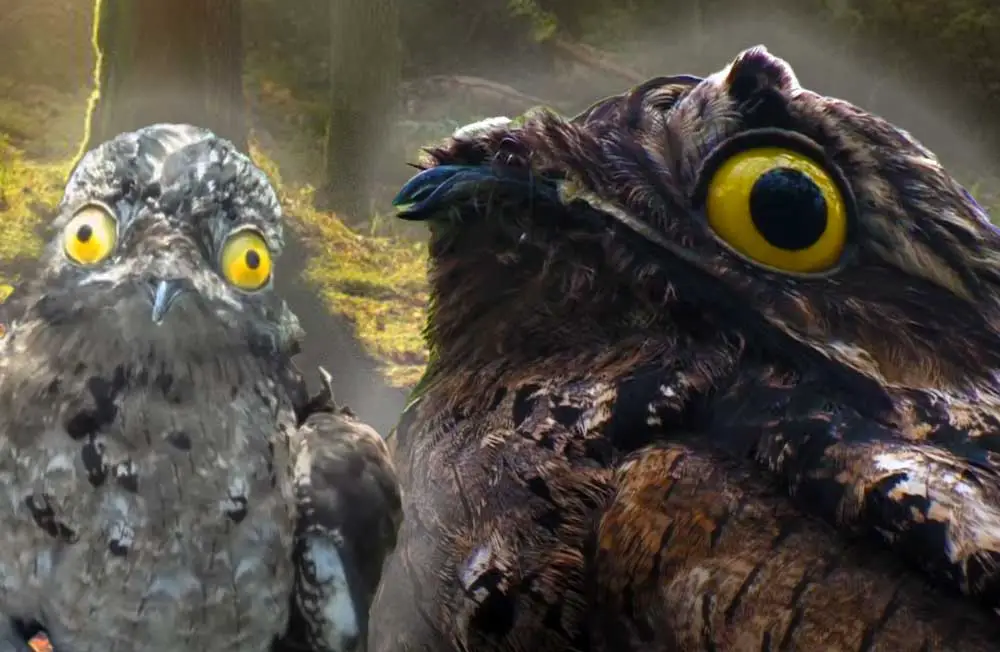
The great potoo bird, also known as the common potoo, is a fascinating creature that inhabits the forests of Central and South America. This nocturnal bird is renowned for its unique appearance and unusual behavior, making it a favorite of birdwatchers and nature enthusiasts alike. In this article, we will explore the many interesting facts about the great potoo bird and learn more about this elusive species.
Appearance and Physical Characteristics
The great potoo bird is a large, nocturnal bird that belongs to the Nyctibiidae family. It can grow up to 20 inches in length and has a wingspan of up to 2 feet. Its most distinctive feature is its wide, gaping mouth, which it uses to catch insects in flight.
The great potoo bird also has a broad, flat head, large eyes, and a short, hooked bill.
The bird’s plumage is mostly brown, with a mottled pattern that blends in perfectly with the bark of trees. This camouflage makes it almost impossible to spot the bird during the day, which is when it sleeps perched on a tree branch.
The great potoo bird has long, pointed wings and a short tail, which helps it manoeuvre easily through the forest canopy.
Habitat and Distribution
The great potoo bird is found throughout Central and South America, from Mexico to Argentina. It inhabits a variety of forest types, including rainforest, deciduous forest, and mangrove forests. The bird prefers to live in areas with tall, mature trees, where it can perch and hunt insects in the dark.
Behaviour and Diet
The great potoo bird is primarily nocturnal, spending most of its day perched on a tree branch, motionless and hidden in plain sight. Its camouflage makes it almost impossible for predators to spot it, and it relies on this strategy to avoid detection during the day.
At night, the great potoo bird becomes active, hunting for insects in flight. It uses its wide, gaping mouth to catch moths, beetles, and other insects, which it swallows whole. The bird’s mouth is so large that it can swallow prey that is almost as large as its own body.
Reproduction and Life Cycle
The great potoo bird is a solitary creature and is rarely seen in pairs or groups. During the breeding season, the male will call out to attract a mate, and the pair will build a nest in the fork of a tree branch. The female will lay one or two eggs, which are incubated for about a month.
After hatching, the chicks are cared for by both parents, who bring them insects to eat. The young birds fledge after about a month and will remain with their parents for a few more weeks before becoming independent.
Conservation Status
The great potoo bird is listed as a species of Least Concern on the IUCN Red List. However, habitat loss and fragmentation due to deforestation pose a threat to the bird’s survival. The bird is also vulnerable to hunting and capture for the pet trade, which is illegal but still occurs in some areas.
Final Thoughts
The great potoo bird is a fascinating and unusual creature that has captured the imagination of birdwatchers and nature enthusiasts worldwide. Its unique appearance, behavior, and hunting techniques make it one of the most intriguing birds in the world.
Although the bird is not currently threatened with extinction, conservation efforts must continue to protect its habitat and prevent illegal hunting and capture. As we continue to learn more about the great potoo bird, we can appreciate its beauty and importance as a vital part of our natural world.

More interesting articles you may be interested in reading:
How To Remove A Tree Stump Painlessly
10 Vital Home Maintenance Tasks You’ll Regret If You Forget
See How Much Propane Is Left In A Tank With No Gauge
Thanks for reading and be sure to share this info with your friends using the social share buttons below.
Talking about social stuff, consider liking our Facebook page to keep up to date with our articles. Check out our other articles for more mental scoops
